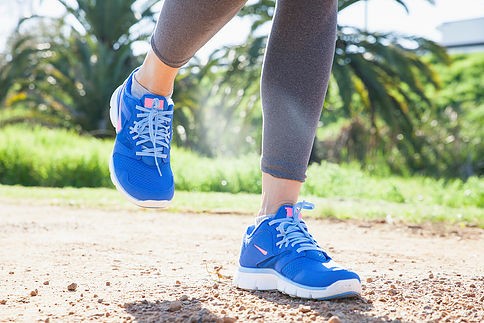
Dr. Richa Mittal
So, I get this question often.
How much exercise do I need? Are there things I can do outside of formal exercise that can help my health?
Is there a health benefit to me regardless of weight loss? (Yes!)
How much is enough? What kinds of exercise are beneficial?
You may have heard that mortality (death) goes down as fitness level improves. So, even moving to a light activity level from a sedentary level helps improve your health!
Most people can safely start an exercise program and gradually increase the intensity as long as they are making a habit of exercising regularly.
If you have any medical problems, especially related to heart or lungs, you should discuss with your physician before starting an exercise program.
According to the US Dept of Health and Human Services guidelines, it is recommended that for general health benefit, one should be getting 150 min/week (about 30 mins 5 x/wk) of aerobic exercise plus strength training (muscle resistance training) 2 x/week).
For prevention of weight gain, individuals need 150-300 minutes per week and for prevention of weight regain, 300-420 minutes. As you can see, once you have lost weight, exercise is IMPERATIVE in maintaining the weight loss.
Quick note: Examples of aerobic exercise are walking, jogging, elliptical, biking, swimming, dancing, kickboxing and the list goes on. Find something you enjoy and make time for it!
Muscle resistance training is essential as well!
Strong muscles burn more energy at rest and help maintain weight and fitness. Strong muscles also allow your body to respond better to insulin (see prior post for info on insulin resistance!).
To be successful, start with small goals and keep advancing to your ultimate goal based on the above guidelines.
You have to make something a habit first! So even starting with 15 minutes a day (you know you can spare 15 minutes!) is a great place to start.
What are other things we can do to be more active?
Increase your NEAT (non-exercise activity thermogenesis)!
This is the amount of calories you burn for activities other than sleep, eating and exercise.
Chemicals like orexin (a chemical produced in a part of the brain called the hypothalamus) has been found to be higher in people who move around more. Low orexin levels are associated with obesity.
How does one increase NEAT? Through living a physical lifestyle: Walk your dog, take the stairs, bike or walk to work, park further away. Get a standing desk at work. Get up every hour if you are seated at a desk.
You can use activity trackers like Jawbone, Garmin or the FitBit to track your physical activity and even get frequent reminders to get up and move!
Stay tuned for more tips next week. Until then, be well!
The Content is not intended to be a substitute for professional medical advice, diagnosis, or treatment. Always seek the advice of your physician or other qualified health provider with any questions you may have regarding a medical condition.

